Review - EPoX 4G4A+ Intel 845G Motherboard
Techware Labs gratefully recognizes EPoX's support in making this review possible!
Review by Edward Chang, call sign: Big_E
July 26, 2002

In the following benchmarks, an Intel Pentium 4 Northwood 1.6A was used to show scores at 400, 533, and higher FSBs. In order to do so, the processor was overclocked. The Northwood operated at its default 1.6 GHz (400), an overclocked 2.13 GHz (533), and even higher 2.4 GHz (600). The number after the FSB is the memory frequency; 266, 333, and 375 MHz DDR. The 4G4A+ is today's feature i845G-based motherboard and the 4BEAV is an i845D-based one. The first column in these graphs show performance results without the Intel Application Accelerator installed; the others have IAA installed. "int. vga" denotes a test run with the onboard video, and "r8500" means that particular test was run with the ATi Radeon 8500 and integrated video disabled.
Direct3D Gaming Benchmarks:
3DMark2001
Second Edition
3DMark2001 is run with its default settings.
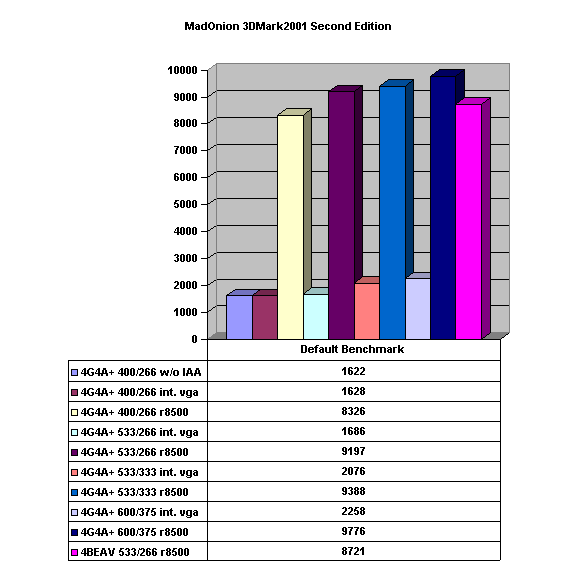
These scores show that the i845G is better than its i845D predecessor running at the new 533MHz FSB standard. Although the Intel Brookdale-G graphics chip is definitely slower than a 128MB ATi Radeon 8500, it still manages to perform better than the last generation of horrible integrated Trident and S3 video. On another note, manufacturers claim that Intel's Application Acceleration, which is essentially an updated Ultra ATA Storage driver, would boost system performance dramatically. As one will see, IAA will not help improve gaming speed much.
3DMark2000
v1.1
3DMark2000 is run with its default settings.
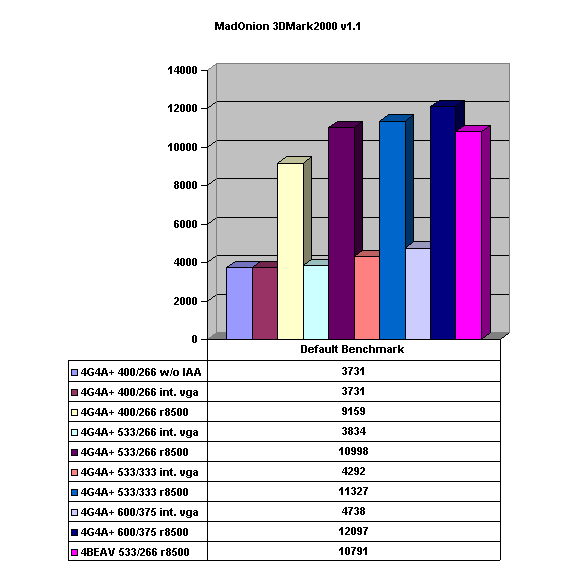
The integrated Brookdale-G video runs faster in the DirectX 7 optimized 3DMark2000; while the Radeon 8500-powered test systems remain high up there, the integrated video on the Intel 845G catches up a little.
Unreal Tournament
Unreal Tournament is run in high skin and world texture mode, and other default graphic settings.
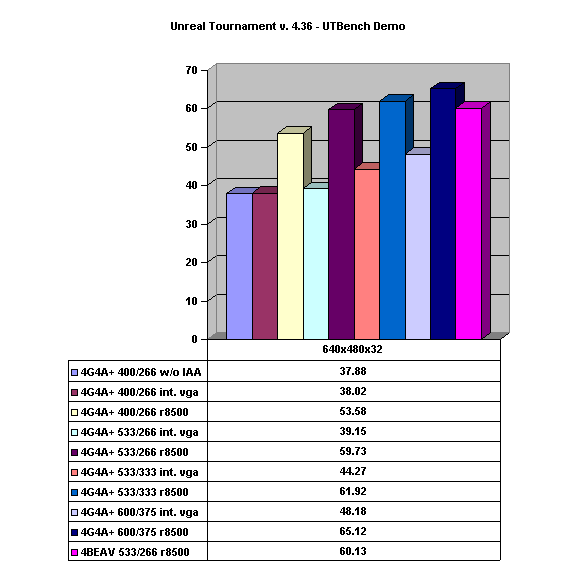
Amazingly, the Radeon 8500 graphs resemble the previous charts. This time, the Brookdale video scores even closer in this CPU-intensive game; being only a little more than 50% behind when running at 2.13 GHz (533/266).
OpenGL Gaming Benchmarks:
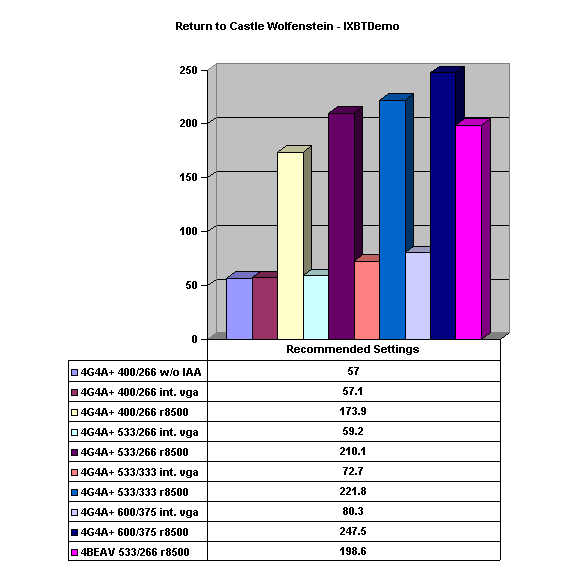
While one doesn't necessarily need more than 200 fps when playing Quake 3 Arena, the 4G4A+'s integrated video pushes out a playable frame rate in this demo.
Quake 3 Arena
V-sync off
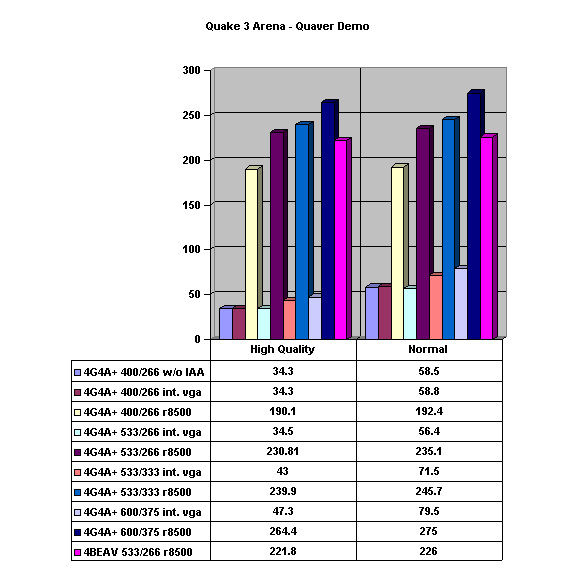
In, Return to Castle Wolfenstein, the games gets slightly choppy at times when using the integrated video.
DroneZMark
GeForce 2 MX 64 and GeForce 2 MX MAX graphic settings.
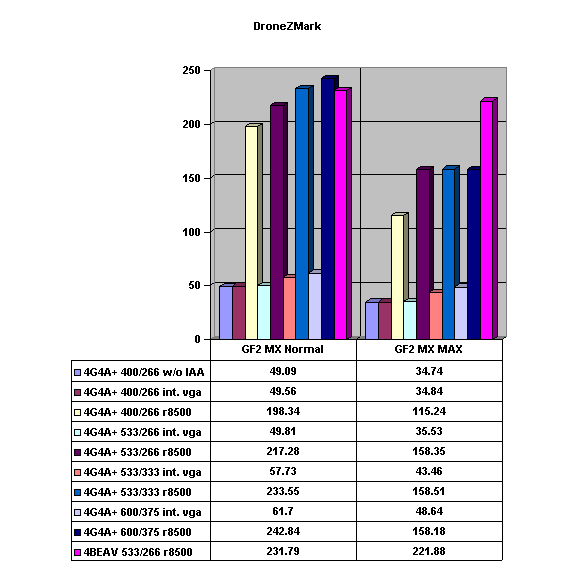
The frame rate periodically dipped below the optimal 28 fps in this graphically demanding benchmark when using the 4G4A+'s integrated video.
VulpineGLMark
640x480x32bit, Open GL 1.2, Texture Compression, v-sync off, sound off.
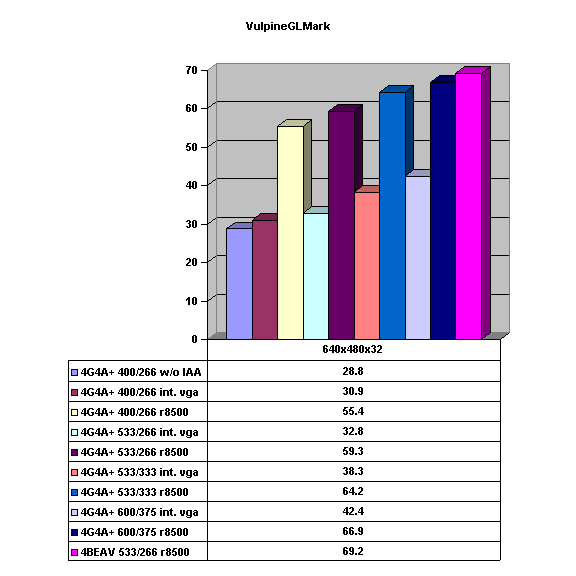
This benchmark must also require more processing power, as the Brookdale-G video onboard the 4G4A+ is not way behind.

